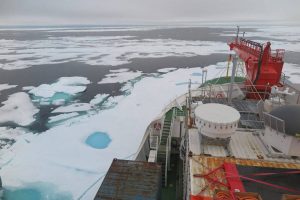The ‘Last Ice Area’ (LIA):

Last Ice Area: This region is located north of Greenland and Ellesmere Island in the Canadian territory of Nunavut.
- This area was believed to be strong enough to withstand global warming.
- The total disappearance of summer ice in the Arctic was estimated by the year 2040, however the ‘Last Ice Area’ was the exception.
- World Wildlife Fund (WWF)-Canada was believed to be the first to call this area the ‘Last Ice Area’.
- It was thought to be able to help ice-dependent species as ice in the surrounding areas melted away.
- It is used by polar bears to hunt for seals who use ice to build dens for their offspring. Walruses too, use the surface of the ice for foraging (to search for food).
- Sea ice is a highway for inuit, who use it to travel and hunt.
- The term Inuit refers broadly to the Arctic indigenous population of Alaska, Canada, and Greenland.
- About 80% of thinning can be attributed to weather-related factors such as winds that break up and move the ice around.
- The remaining 20% can be attributed to longer-term thinning of the ice due to global warming.
About Arctic:
- The Arctic is a polar region located at the northernmost part of Earth.
- The Arctic consists of the Arctic Ocean, adjacent seas, and parts of Alaska (United States), Canada, Finland, Greenland (Denmark), Iceland, Norway, Russia, and Sweden.
- Land within the Arctic region has seasonally varying snow and ice cover.
- Since 2013, India has had observer status in the Arctic Council, which is the predominant inter-governmental forum for cooperation on the environmental and development aspects of the Arctic.




